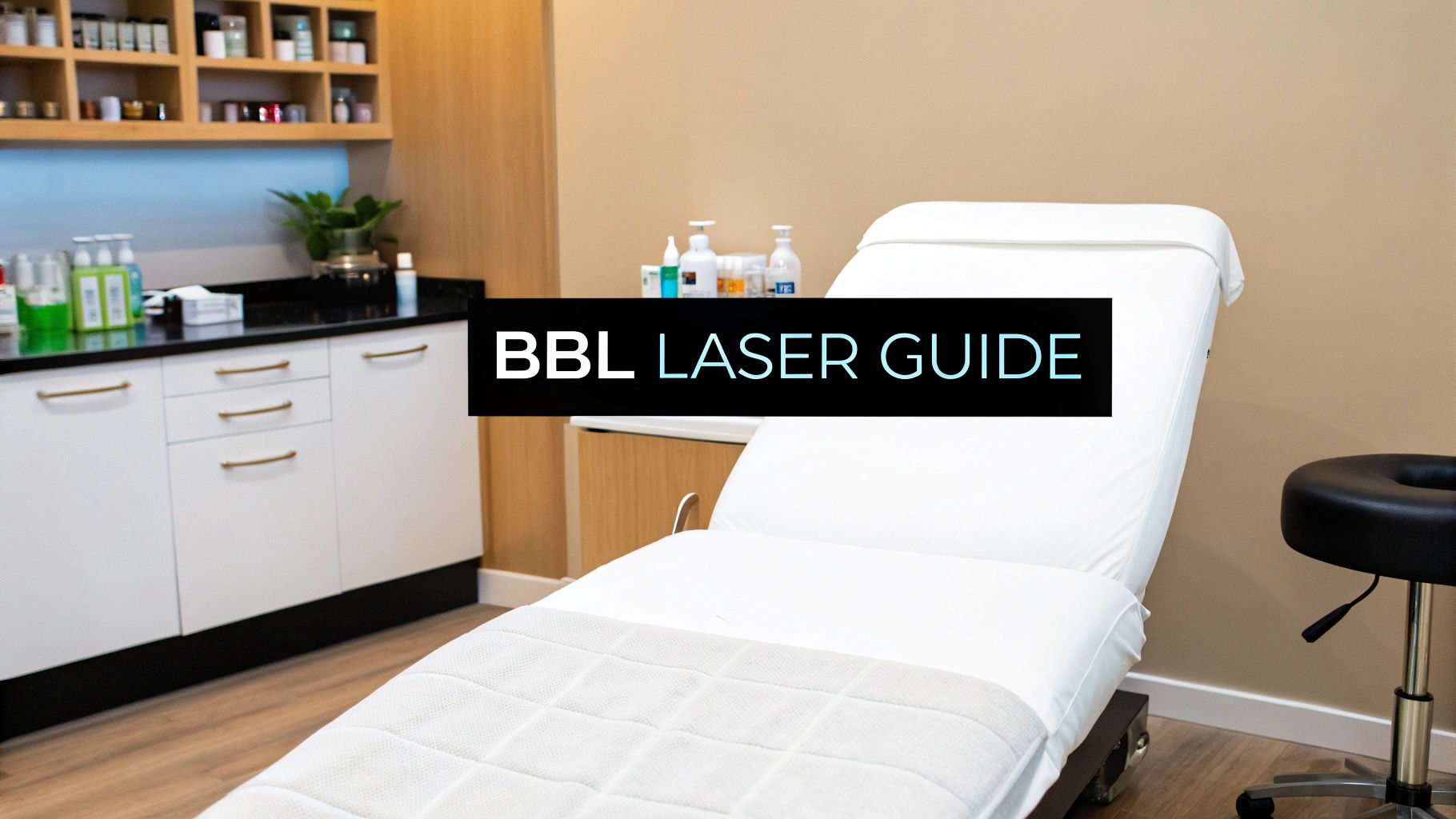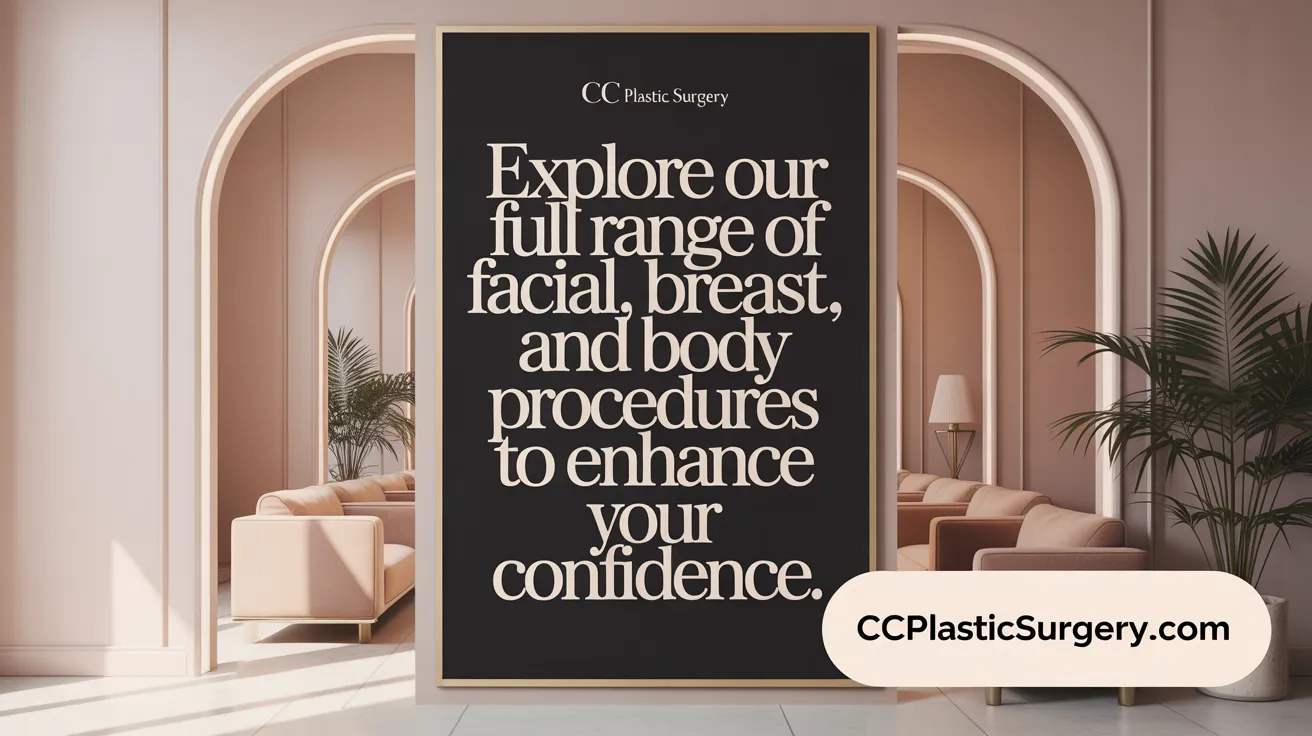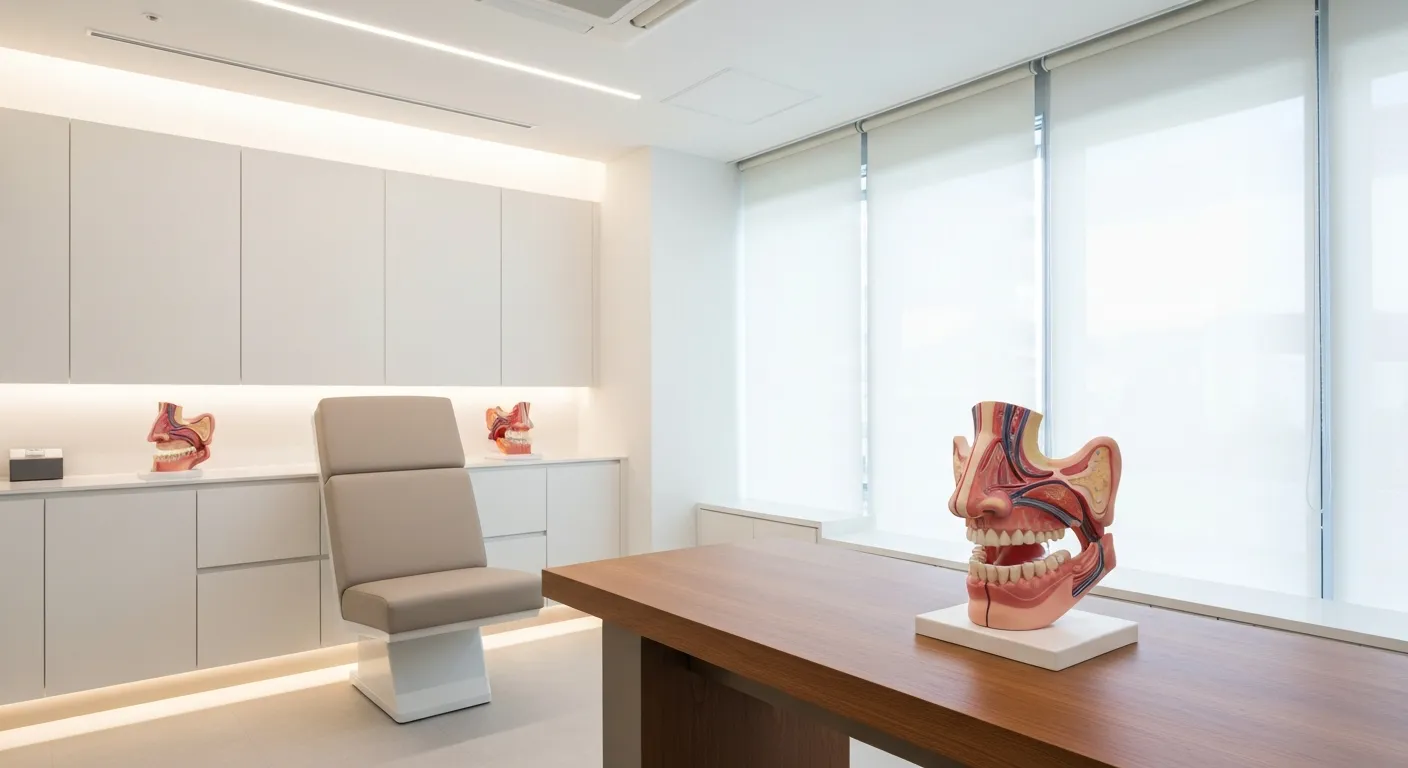
November 18, 2025
BBL Laser Day by Day A Realistic Recovery Guide
What really happens after BBL? This bbl laser day by day guide shows you what to expect, from immediate aftercare to the final stunning results.
Nov 18, 2025

Rhinoplasty, commonly called a "nose job," is a surgical procedure designed to reshape the nose. It can be performed for aesthetic reasons—to enhance facial harmony and balance—or for functional purposes, such as correcting breathing problems caused by structural irregularities. Often, patients seek rhinoplasty to address issues like a deviated septum, nasal asymmetry, or to repair damage from injury.
This procedure suits adults who have completed facial growth and are in good physical health. Candidates should have realistic expectations and a clear understanding of their personal goals. Rhinoplasty benefits those looking to improve nasal appearance, enhance breathing function, or both. Sometimes, it is performed for reconstructive reasons after trauma or congenital defects.
The nose's structure consists of bone at the upper part and cartilage at the lower part. Rhinoplasty may involve modifying the bone, the cartilage, the skin, or a combination of these to achieve the desired results. Surgeons carefully evaluate skin thickness, cartilage strength, and nasal shape during preoperative planning to tailor the procedure to the individual's anatomy.
Surgeons use either an open or closed technique. Open rhinoplasty involves a small external incision along the columella—the tissue between the nostrils—which allows greater visibility and access for significant reshaping. Closed rhinoplasty uses incisions inside the nostrils, resulting in no visible scars, and is often chosen for minor adjustments. Both approaches are performed under anesthesia, either general or local with sedation, based on the complexity of the surgery.

Rhinoplasty is a surgical procedure designed to reshape the nose to improve its appearance and/or enhance breathing function. It aims to create a nose that harmonizes well with the patient’s facial features while resolving any structural issues that impair nasal airflow.
The surgery can be pursued for cosmetic reasons, such as altering the size, shape, or angle of the nose to enhance facial symmetry and aesthetic appeal. Functionally, rhinoplasty addresses problems like a deviated septum or nasal valve collapse that hinder breathing. Some patients undergo reconstructive rhinoplasty to repair defects caused by trauma, birth abnormalities, or disease.
Ideal candidates include adults who have completed facial growth and have realistic expectations. Individuals with nasal deformities affecting appearance or breathing, and those needing revision surgery or reconstructive repair, can benefit significantly. This dual purpose makes rhinoplasty a highly versatile procedure.
Rhinoplasty is one of the most commonly performed cosmetic surgeries in the United States, with over 350,000 procedures annually. Its popularity reflects its impact on both physical function and self-confidence, thanks to advances in surgical techniques and personalized patient care offered by qualified ENT surgical specialists.

Preparing for rhinoplasty involves several important steps to ensure safety and optimize surgical outcomes. Initially, patients undergo a detailed medical history review and physical examination. This helps the surgeon understand individual health conditions that might affect surgery or recovery (Rhinoplasty preparation, Preoperative evaluation for rhinoplasty).
A thorough assessment includes discussing past surgeries, current medications, and underlying health issues. Photographic documentation provides a visual baseline and aids surgical planning (Rhinoplasty patient consultation, Preoperative evaluation for rhinoplasty.
Depending on individual needs, lab tests such as blood work and an EKG may be required about three weeks before surgery. Patients are advised to stop medications that increase bleeding risk, including aspirin, anti-inflammatory drugs, and certain herbal supplements (Rhinoplasty pre-surgery instructions, Preoperative medical evaluation).
Nicotine products must be discontinued at least two weeks prior, as smoking impairs circulation and delays healing (Avoiding smoking before nose surgery, Postoperative Care of Rhinoplasty.
Before surgery, patients meet with their surgeon to discuss goals, review photos, and set realistic expectations. Computer imaging may be used to preview possible results (Rhinoplasty patient consultation, Computer simulations in rhinoplasty).
Since surgery is often performed under anesthesia, patients should arrange for someone to drive them home and stay with them for the first night to provide necessary support during early recovery (Post-rhinoplasty care, Postoperative care for rhinoplasty.
These preparatory measures help reduce risks and promote a smooth healing process, contributing to the success of rhinoplasty procedures (Rhinoplasty preparation, Post-operative care for rhinoplasty).

Dr. Marc Fater leads the medical team at Cape Cod Plastic Surgery as a board-certified plastic surgeon. His extensive training and commitment to patient-centered care ensure that individuals receive expert attention tailored to their needs. Dr. Fater’s leadership reflects a dedication to advancing safe and effective cosmetic procedures, including rhinoplasty.
Board certification is a critical marker of a surgeon's expertise and commitment to quality. Dr. Fater's credentials signify that he has met rigorous standards in plastic surgery, ensuring high competency in performing rhinoplasty and other aesthetic procedures. Experience and ongoing education further reduce risks and enhance patient outcomes.
Cape Cod Plastic Surgery emphasizes personalized consultations where patients can discuss their goals and concerns openly. These sessions allow Dr. Fater to develop customized treatment plans that harmonize with each patient's unique facial features and expectations, enhancing satisfaction and natural results.
The surgery is performed in an accredited and licensed facility that complies with strict safety standards. This environment ensures that patients undergo rhinoplasty with access to advanced surgical tools and protocols designed to optimize safety and recovery.
Who leads the medical team at Cape Cod Plastic Surgery? Dr. Marc Fater is the primary surgeon and leader, a board-certified plastic surgeon dedicated to personalized care in a safe, accredited facility.

Cape Cod Plastic Surgery provides a broad spectrum of cosmetic and reconstructive surgical services designed to enhance patient confidence and appearance. Their surgical offerings include:
Beyond surgery, they offer advanced non-surgical aesthetic treatments for patients seeking minimally invasive options. These include Botox injections and a variety of dermal fillers like Juvéderm, RHA, Volbella, and Radiesse. CoolSculpting is also available for targeted fat reduction without surgery.
Their patient-centered approach ensures customized treatment planning based on each individual's unique anatomy and aesthetic desires. Through thorough consultations, patients receive personalized recommendations aligning with their goals and health status.
Cape Cod Plastic Surgery emphasizes safety, natural-looking results, and long-term patient satisfaction by combining expert surgical techniques with innovative non-invasive therapies.
Cape Cod Plastic Surgery prioritizes patient safety and high-quality care through a comprehensive, patient-centered approach. All procedures are conducted in accredited medical facilities, which comply with rigorous safety standards to provide a secure environment for surgical care (Plastic Surgery in Cape Cod).
The surgical team comprises board-certified plastic surgeons with extensive training and expertise, including completion of specialized residencies and fellowships. Their advanced surgical techniques reflect current best practices in rhinoplasty and other cosmetic procedures (Board-certified plastic surgeons).
Personalized treatment plans are developed during detailed consultations, ensuring that each patient’s unique anatomy, goals, and health status guide surgical decisions. This tailored approach promotes both functional and aesthetic outcomes that align with patient expectations (Rhinoplasty patient consultation.
Postoperative support is a critical component, featuring careful monitoring throughout the recovery phase. Patients receive clear instructions on care, activity restrictions, and signs that warrant prompt medical attention (Postoperative care instructions. Follow-up visits facilitate assessment of healing progress and early identification of any complications (Follow-up care after rhinoplasty.
Emphasizing patient satisfaction, Cape Cod Plastic Surgery fosters transparent communication and education, empowering patients with realistic expectations and enhancing their confidence in the surgical journey. Credentials, positive testimonials, and consistent recognition as a leading practice in the Cape Cod region underpin their commitment to excellence and safety (Patient testimonials.
Cape Cod Plastic Surgery offers a comprehensive range of non-surgical aesthetic treatments designed to enhance facial appearance and complement surgical options. These include Botox for smoothing wrinkles and dermal fillers such as Juvéderm, RHA, Volbella, and Radiesse that restore volume and contour to the face.
The clinic provides advanced skin resurfacing techniques including laser treatments and chemical peels to improve skin texture and tone. For skin tightening, patients can choose from innovative procedures like FaceTite, AccuTite, and Morpheus8 that stimulate collagen production, as well as CoolSculpting for targeted fat reduction.
Non-invasive treatments offer the advantage of minimal downtime and lower risk compared to surgery while delivering natural-looking rejuvenation. These options effectively address fine lines, volume loss, skin laxity, and superficial imperfections, often enhancing surgical results or serving as stand-alone treatments to boost confidence and facial harmony.
Patients interested in exploring these treatments can receive personalized consultations at Cape Cod Plastic Surgery, ensuring tailored care plans that align with their aesthetic goals and lifestyle needs.
Rhinoplasty surgery involves two primary surgical approaches: open rhinoplasty technique and closed rhinoplasty technique. Open rhinoplasty requires a small external incision along the columella—the tissue between the nostrils—allowing the surgeon enhanced visibility of the underlying nasal structures. Closed rhinoplasty uses incisions made entirely inside the nostrils, resulting in no visible external scars and is typically chosen for less extensive reshaping.
Anesthesia during rhinoplasty can be either local anesthesia with sedation, which numbs the area while keeping the patient relaxed, or general anesthesia, which renders the patient fully unconscious. The choice depends on the complexity of the procedure and patient needs.
The typical duration of rhinoplasty ranges from 1.5 to 3 hours. Surgeries are mostly outpatient rhinoplasty, allowing patients to leave the same day unless specific conditions call for an overnight stay.
Rhinoplasty adjusts the shape of the nose by modifying its foundational structures: the upper portion is bone, and the lower part is cartilage. Surgical techniques may involve reshaping, removing, or repositioning both bone and cartilage to achieve the desired form and function as explained in Rhinoplasty surgical technique.
For structural support or aesthetic refinement, surgeons sometimes utilize grafts harvested from the patient's own ear, rib, or nasal septum. Implants, such as silicone implant complications or Gore-Tex implant benefits, may also be employed, particularly for augmentative purposes. The use of grafts or implants is carefully tailored to the patient's anatomy and surgical goals, carried out under strict clinical standards to minimize risks and enhance outcomes.
This combination of surgical methods, anesthesia options, and precise structural modification exemplifies the advanced and personalized approach rhinoplasty surgeons take to restore both appearance and function effectively.
Recovery after rhinoplasty typically involves several common experiences, including swelling, bruising, and nasal congestion. Swelling and bruising usually peak within the first two to three days following surgery and then gradually diminish over the next few weeks. Nasal congestion from swelling and blood buildup is common during the first week but tends to improve steadily.
Immediately after surgery, a splint or nasal cast is applied to protect the newly shaped nose and provide structural support. This splint is usually worn for about one week before removal. Nasal packing or gauze may be used inside the nose for the first night or several days to control bleeding and maintain nasal structure. Stitches, if present, typically dissolve or are removed within the first week.
For optimal healing, patients should keep the head elevated as much as possible for the first 7 to 10 days to reduce swelling. Strenuous activities and exercise should be avoided for at least 2 to 3 weeks. Patients are advised to refrain from blowing their nose for at least one week and avoid wearing glasses or any pressure on the nose for up to two months.
Protecting the nose from any trauma or accidental injury is crucial during the first 3 months, especially if nasal bones were repositioned. Sun protection for up to a year post-surgery is recommended to prevent skin discoloration and reduce scarring.
Regular follow-up appointments with the surgeon are essential to monitor healing progress and promptly address any complications. Patients should watch for signs of excessive bleeding, infection, severe pain, breathing difficulties, or unusual swelling and contact their healthcare provider immediately if these occur.
Though most swelling subsides within 3 to 4 weeks, subtle swelling can persist for several months, particularly at the nasal tip. The nose continues to refine and mature up to a year after surgery, at which point the final aesthetic and functional results become fully apparent (Rhinoplasty recovery timeline).
| Recovery Aspect | Typical Timeline | Notes |
|---|---|---|
| Swelling and Bruising | Peaks 2-3 days, resolves weeks-months | Most swelling gone by 1 year (Postoperative care instructions) |
| Splint/Cast Use | Approximately 1 week | Supports and protects nasal structure (Use of splints |
| Nasal Packing | 1-2 days | Controls bleeding and supports septum (Nasal packing care instructions) |
| Activity Restrictions | 2-3 weeks for strenuous activity | Avoid nose trauma for at least 3 months (Activity restrictions and protection |
| Follow-up Care | Multiple visits in 1st year | Critical for detecting complications (Importance of follow-up care |
| Final Results | Up to 1 year | Slow resolution of tip swelling (Rhinoplasty recovery process |
Rhinoplasty, while generally safe when performed by an experienced surgeon, carries several potential risks and complications that patients should be aware of. Common risks include bleeding and infection, which typically require close postoperative monitoring to manage effectively. Adverse reactions to anesthesia, though rare, are also a concern during surgery. For detailed information on these issues, see risks in rhinoplasty.
Patients may experience breathing difficulties post-surgery, particularly if structural changes alter nasal airflow. Numbness around the nose or upper lip can occur, sometimes temporarily. Uneven or asymmetrical nasal appearance due to healing variations is another possibility and may necessitate revision surgery. Further discussion on breathing disturbances and revision rhinoplasty can be found in risks in rhinoplasty.
Specific complications include septal perforation—a rare but serious issue where a hole develops in the nasal septum—potentially leading to chronic problems and requiring further surgical intervention. Scarring, though generally minimal and well-hidden, remains a risk, especially with the open rhinoplasty approach. For advice about scarring and healing, consult Rhinoplasty scars and healing.
Selecting a board-certified, experienced rhinoplasty surgeon significantly reduces these risks. Surgeons with advanced training and extensive practice are better equipped to plan precise surgical techniques tailored to individual anatomy, minimizing complications and improving outcomes. You can find trusted specialists and learn about the importance of board certification at Choosing a qualified rhinoplasty surgeon.
In summary, while rhinoplasty offers the benefit of improved appearance and function, patients must have realistic expectations about the risks. Careful patient evaluation, surgical planning, and postoperative care are essential to ensure a safe procedure and satisfactory results. Comprehensive patient guides covering evaluation, surgical planning, and postoperative care are available at Rhinoplasty overview and patient care.
Consulting with a qualified, board-certified surgeon is crucial when considering rhinoplasty. Surgeons certified by bodies such as the American Board of Plastic Surgery or the American Board of Otolaryngology provide expert care and demonstrate advanced surgical skills. This expertise helps minimize risks and enhances the likelihood of satisfactory, natural-looking results.
Understanding the realistic outcomes of rhinoplasty is essential. Final results develop gradually, often stabilizing over a period of up to a year. A skilled surgeon will provide detailed consultation, including photographic analysis and potential computer simulations, to help patients visualize possible outcomes and set achievable goals.
Preparation involves medical evaluation, cessation of nicotine and certain medications, and arranging support post-surgery. The procedure, usually outpatient and lasting 1.5 to 3 hours, can be performed under general anesthesia or local sedation. Recovery includes managing swelling and bruising, wearing a nasal splint for about a week, and avoiding strenuous activities and nose trauma for several weeks. Awareness of potential risks such as bleeding, infection, breathing difficulties, and possible need for revision surgery is vital.
Facilities like Cape Cod Plastic Surgery, known for their board-certified surgeons and patient-centered approach, emphasize individualized treatment plans. Their expertise and commitment to natural, harmonious results provide patients with confidence throughout their rhinoplasty journey.
This informed approach empowers patients to make decisions aligned with their aesthetic goals and health, ensuring safety and satisfaction.

November 18, 2025
What really happens after BBL? This bbl laser day by day guide shows you what to expect, from immediate aftercare to the final stunning results.

November 18, 2025
Essential Insights for Patients Considering Rhinoplasty Surgery

November 17, 2025
does insurance cover deviated septum? Learn what counts as medical necessity, how preauthorization works, and tips to get your septoplasty claim approved.